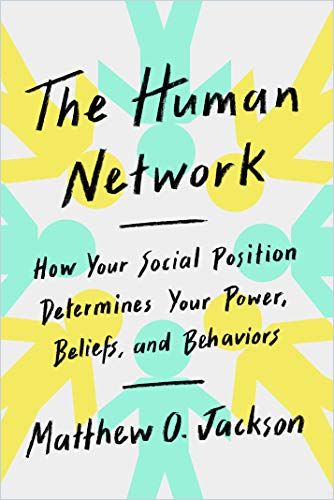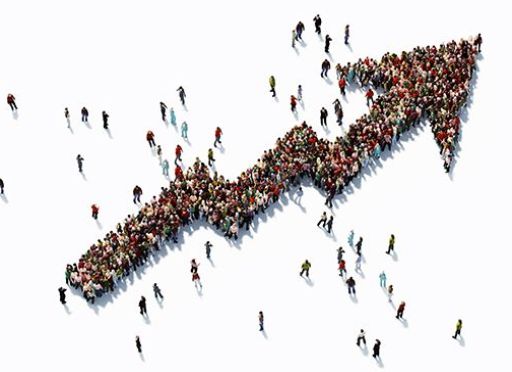Stanford University economics professor Matthew O. Jackson breaks down the types, the reach and the force of human networks.

The Power of Networks
Matthew O. Jackson, a Stanford University economics professor and a fellow of the Canadian Institute for Advanced Research (CIFAR), explains how your human networks shape your life. He details how complex webs of social connections maintain a status quo across generations by systemically situating certain groups for success and others for failure. Jackson urges you to embrace positive personal and global change by understanding the inner workings of your human networks.
The New York Times said, “Professor Jackson…presents…complex research engagingly.” He “shows how…network theory relates to…contemporary issues, from financial contagions to the spread of fake news.” Kirkus Reviews found this “a mixture of delicious truths and ingenious sociological concepts that will convince most readers that we pay too much attention to the people around us.”
Influence and Power
Jackson reveals that humans have always divided themselves into networks of social groups. Connected people influence others’ behavior and can create new norms, even when they’re in the minority.
Popular people disproportionately set perceptions and determine norms of behavior.Matthew O. Jackson
He cites an example every high school outcast understands: The most popular students enjoy a disproportionate degree of influence. And, students perceive their popular peers as a majority, even when they’re not. Jackson notes that the same rules apply to social media: Users’ biased perception of what constitutes normal behavior derives from norms that a few well-connected people set.
Centrality
Jackson measures a person’s influence and social position by calculating his or her network centrality in four different ways: “Degree centrality” refers to someone’s direct influence on others. “Eigenvector centrality” measures the power and connection of someone’s friends. Jackson points out that Google ranks search pages similarly by deeming that a page is more relevant when other popular pages link to it. “Diffusion centrality” reflects the number of times information spreads through networks before people tire of talking about it. “Betweenness centrality” describes someone whom multiple people rely on to connect with others.
Homophily should not surprise you because, even if you have never heard of the word or any statistics about it, you would have had to have lived your whole life in isolation to have avoided it. Matthew O. Jackson
“Homophily” refers to people’s tendency to interact with those most similar to them – a behavioral pattern, Jackson insists, as old as human history. He reveals, depressingly, that homophily increases when groups have greater animosity toward one another.
Inequality
Homophily associates with measurable negative effects. Countries with the least racial segregation, Jackson divulges, have a GDP of more than six times that of the most-segregated nations.
When homophily creates segregated networks, Jackson found that people experience social immobility – the human networks of their birth lack conditions for success. Jackson explains: People find jobs through connections to friends and acquaintances, so a network that lacks social capital can’t help its members advance.
Generations, Jackson stresses, pass down immobility. He offers the example that people in higher socioeconomic demographics send their children to schools with more resources than schools in lower-income areas.
Like it or not, your fate is closely connected to that of your friends. If they are well-situated, then they can help you. If they are unemployed, then you are out of luck.Matthew O. Jackson
Jackson cites the Italian statistician Corrado Gini, who in 1912 created the Gini index to measure inequality. The Gini index measures a country’s inequality by calculating how much more money an average wealthy member of a society has than a member living in poverty. By this index, Jackson asserts, Denmark has significantly less measurable income inequality than the United States.
Biases and False Assumptions
Jackson explains that societies must have access to quality information if they are to stay informed on important topics, such as climate change or the merits of vaccines.
Despite the breadth and speed of modern connectedness, we have not seen a decrease in the polarization in opinions and beliefs that people hold. Matthew O. Jackson
The author reports that groups of friends tend to echo one another’s views or overemphasize the views of those with the highest centrality; this can create biases. Jackson urges you to beware of networks in which all information traces back to one individual.
Norms
Jackson premise is basic: The behavior of the people around you influences your choices. People coordinate their behaviors, he writes, to match their friends’ behavior. Similarly, people modify their behavior to make sure that pejorative information about them doesn’t spread on networks. When others, especially high-centrality people, monitor your actions, you are likely to modify your behavior to align with the group.
People tend to view others as more trustworthy, whether in business or friendship, when they have a friend in common, creating what’s called a supported relationship within a network.Matthew O. Jackson
People feel they can trust others personally or professionally when they share a friend. Jackson uses the term “embeddedness” to describe the number of friends or connections people share. “Dispersion” measures how closely two people connect through mutual friends. Relationships among people with several mutual friends have greater dispersion, especially if many of their friends aren’t friends with one another.
Review
Jackson’s dense, precise, readable overview exists on a continuum between a college textbook and general reading for the numeric-minded. He codifies varied social trends and behaviors that any conscious user of social media – and all users from Gen Y or Z – recognizes, partakes in and, at times, resists. Jackson breaks down and formalizes knowledge that social media users – and high school students – live out daily. Thus, you’ll nod your head often in recognition of patterns that he presents in their theoretical forms and in their practical applications.
Most of what Jackson parses will not surprise you. His work offers great utility for college professors and students, and for some social scientists. Those most enamored with Jackson’s gleanings are likely to be armchair sociologists or those whom society has not embraced and who wish to gain a greater understanding of how and why they ended up on the outside. Jackson knows and understands.
An external faculty member of the Santa Fe Institute, Matthew O. Jackson also wrote Social and Economic Networks. Other compelling works on human networks include Someone to Talk To by Mario Luis Small and How Behavior Spreads by Damon Centola.




